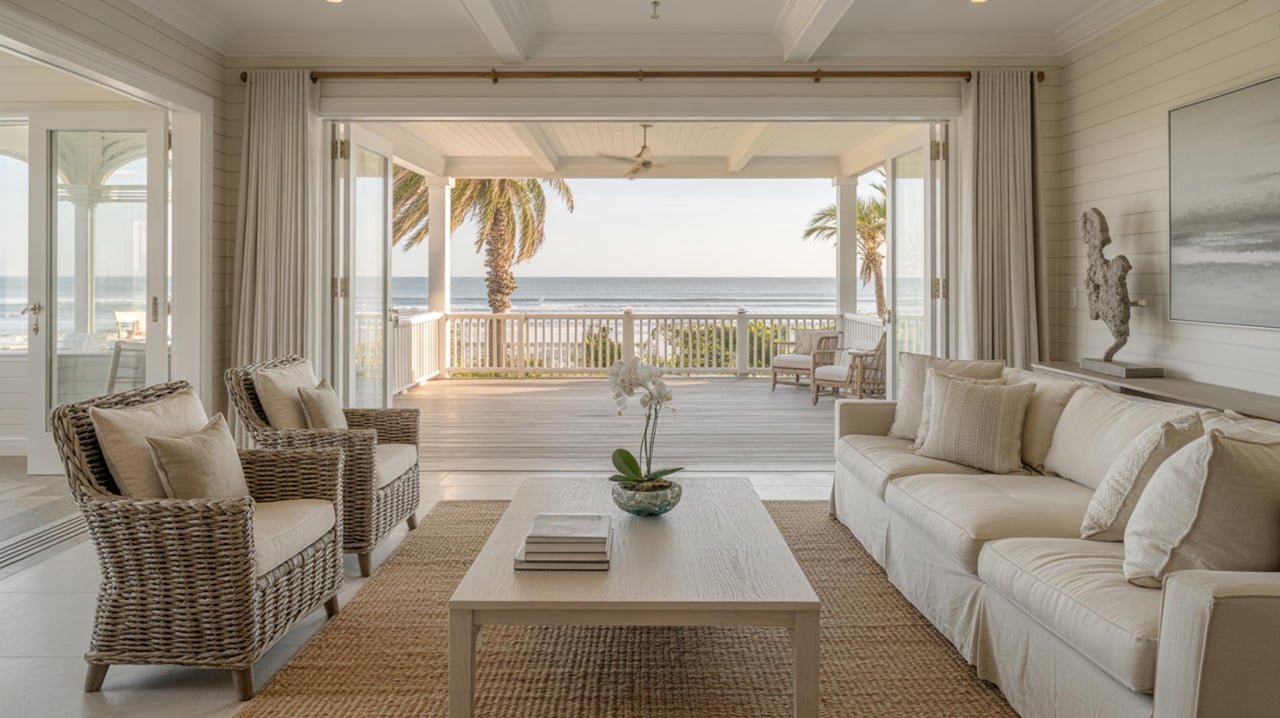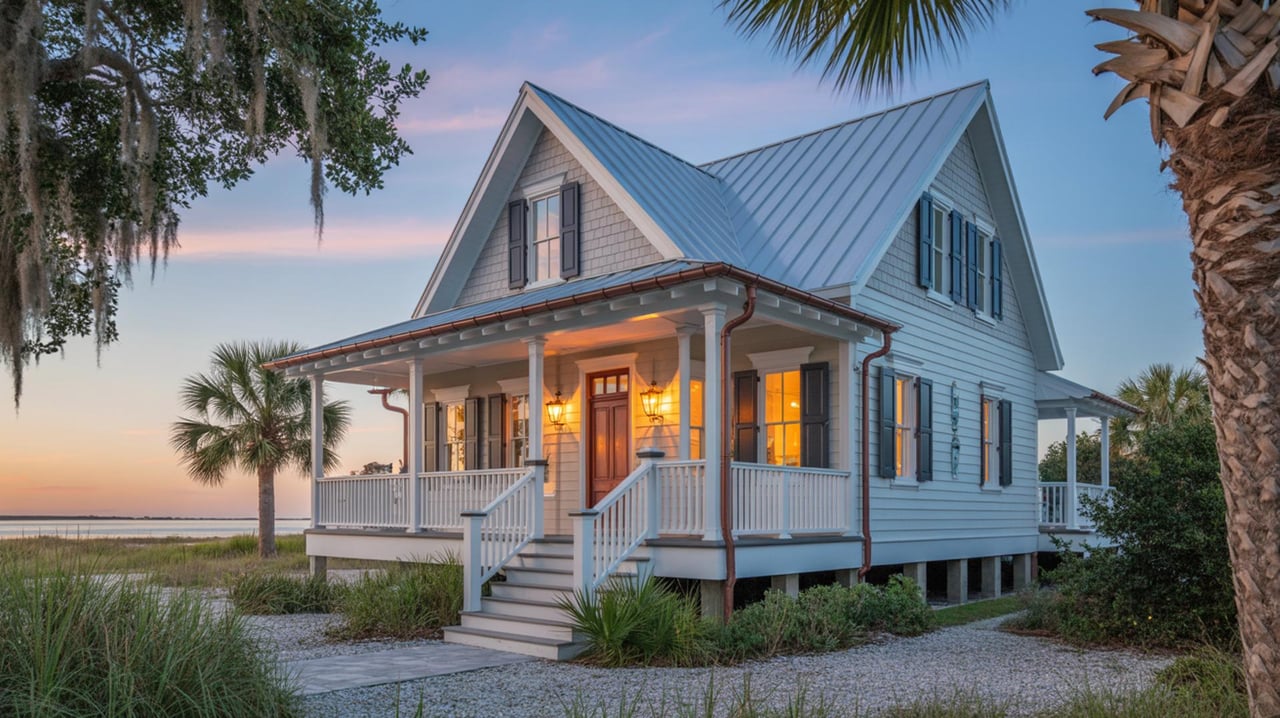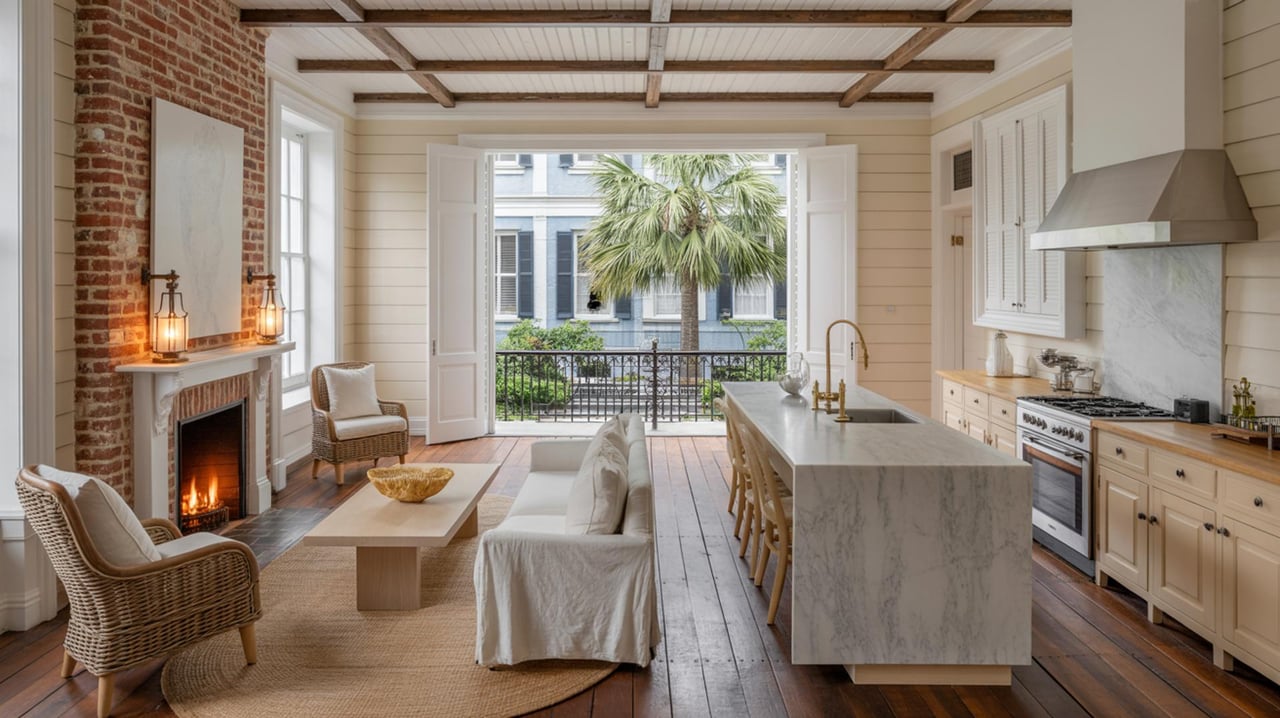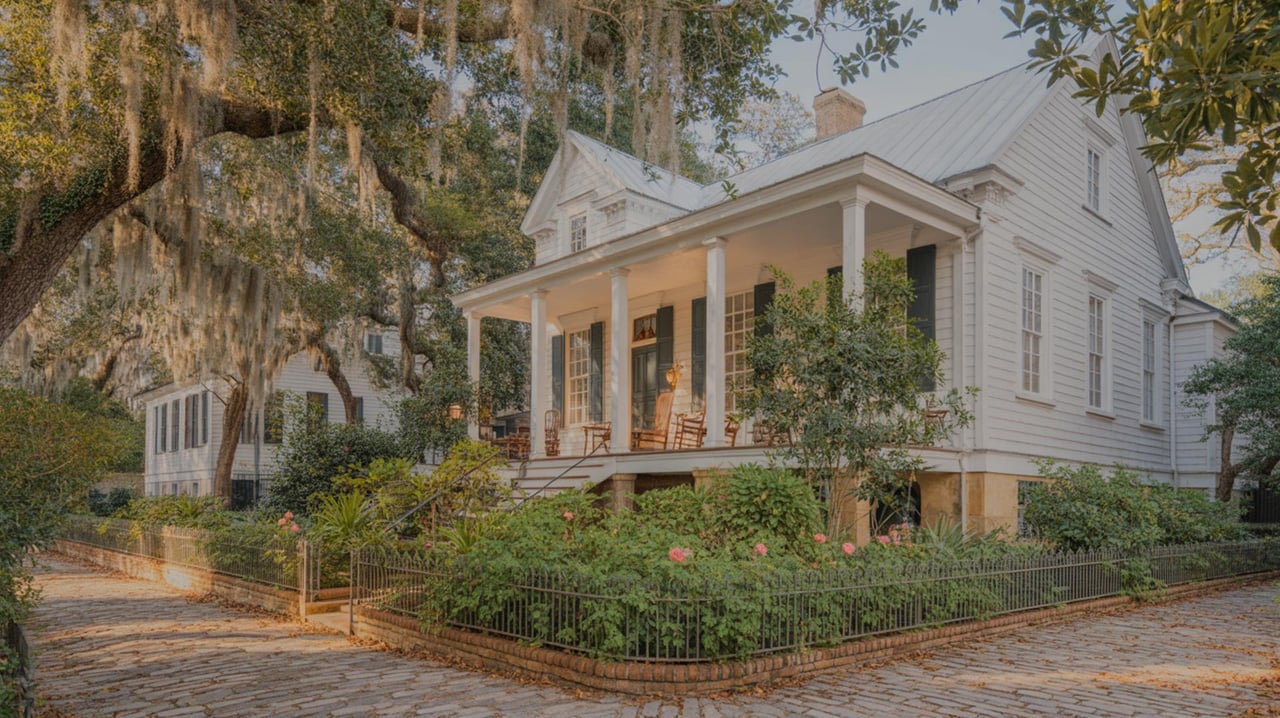Charleston is truly a city like no other, with unique architecture to match. Amid Charleston’s cobblestone streets and Spanish moss-draped live oaks, over 2700 colorful and architecturally significant buildings stand out as something special. And unlike other southern architecture types such as antebellum architecture and French Colonial, you can only find Charleston architecture on Peninsular Charleston. But what makes this architecture so unique and instantly recognizable?
Low skyline. Charleston’s low skyline means church steeples and spires are easily visible, giving the city its nickname “the Holy City.” Low-rise buildings were the norm for hundreds of years from the time the first colony settled on the Ashley River in 1670, and 18th- and 19th-century buildings are common here, especially in the lower part of the peninsula. For many years now, strict ordinances have capped the height on new construction and on renovations on the peninsula to proactively preserve the low skyline, which is key to maintaining the city’s charm.
It’s also worth noting that the reason there are so many steeples and spires in the first place is due to Charleston’s reputation for religious tolerance which dates back to the 1700s. People of many faiths settled here, including those that were often persecuted in Europe and elsewhere in the US, such as Huguenots, Jews, Catholics, Quakers, and others.
Narrow buildings. Many buildings on the peninsula are narrow. Contrary to popular myth, it’s not because of taxes that were based on amount of street frontage, but simply because that’s how the lots were drawn up at the time in the late 17th and early 18th centuries. A narrow frontage is the hallmark feature of the “Charleston single house,” which is just one room wide but typically two rooms deep and three stories tall, with a garden in the back.
Porches. With hot and humid weather for much of the year, it’s not surprising that many buildings in Charleston feature porches. Porches – called “piazzas” in local vernacular – were especially important in the days before air conditioning, when breezes of the water were crucial for cooling down people and houses. The side porch or side piazza is another distinguishing feature of the Charleston single house. It’s usually a covered, two-story porch running the length of the house perpendicular to the street, placed on the west or south side to best take advantage of the breezes coming off the sea. These homes appear to have a front door that faces the street – but in reality these faux entrances open to the piazza where the true entryway is to be found, and were designed to allow for privacy as it was common to keep the windows off the piazza open.
Eye-catching colors. Several Charleston single homes and other buildings from long ago are pastel in color, making for very picturesque vistas. Well-known examples include the “Pink House,” one of the oldest buildings in the state, and the thirteen buildings of “Rainbow Row” on East Bay Street.
Elevated homes. Many homes in the area are raised off the ground by a half or a full story to avoid damage from flooding. They may be built on stilts or pilings, or may be designed so the garage is on the ground floor and the living areas are on the floors above. While you can find some raised homes on the Charleston peninsula, this style is especially common on the barrier islands of Folly Beach, Isle of Palms, and Sullivan’s Island.
Split staircases. Elevated homes often feature split staircases where the stairs coming down from the front door sharply split left and right. This keeps the footprint of the home more compact (compared to having a single long staircase straight out from the front door) while providing symmetry.
Part of American history. Charleston is one of the oldest and best-preserved cities in America, and this is reflected in the mix of architectural styles found all over the city. You can find private homes and public buildings in the Colonial style, Georgian, Federal, Italianate, Greek Revival, Adamesque, and more, all reflecting the current architectural trends of the day. Over two dozen buildings in Charleston are National Historic Landmarks, which are properties that illustrate our country’s heritage. Visiting or living in Charleston is truly a step back into the past, and into a little piece of American history.
Moving to Charleston, SC? Let me help you find your dream home
If you’re thinking about moving to the Charleston, SC area, I can help. My name is Kenton Selvey and I help people buy and sell homes in the beautiful city of Charleston and the surrounding areas. Give me a call at 843-806-7222 or email me here and let me know how I can help you make your dream of living in Charleston come true. I look forward to hearing from you.





